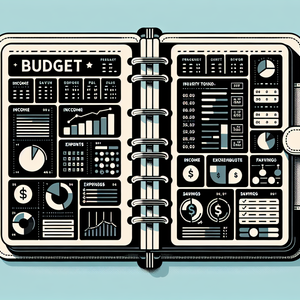The Hidden Wealth of UI/UX Designers

The median salary for UI/UX designers can vary dramatically based on factors such as experience, geographical location, and the industry in which they are employed. According to the Bureau of Labor Statistics, the average salary for designers in the United States hovers around $85,000 per year. However, this figure can be misleading, as many designers earn considerably more when factoring in additional compensation.
Bonuses and Incentives
One of the most attractive features of a career in UI/UX design is the potential for performance bonuses. Many technology companies understand the importance of retaining top talent and offer bonuses that can range from a few thousand dollars to a significant percentage of the annual salary. For example, a mid-level designer earning $90,000 might receive an annual bonus of $10,000 or more based on individual contributions and overall company performance. Moreover, some companies implement profit-sharing programs, allowing designers to reap the rewards of the company’s success directly. This alignment of interests not only enhances overall earnings but also cultivates a sense of ownership and motivation among designers. Such incentives can transform a standard salary into a far more lucrative compensation package.
Stock Options and Equity
Another golden opportunity for UI/UX designers lies in stock options and equity. Many startups and established tech firms include stock options as part of their compensation offerings. This means that designers can purchase shares of the company at a predetermined price, creating the potential for significant financial gains if the company thrives. Consider the case of a designer who joins a startup at its inception. They may receive stock options that could exponentially increase in value if the company experiences rapid growth or successfully goes public. In such scenarios, equity compensation can sometimes surpass the base salary, making it a pivotal aspect of the overall financial rewards associated with the role.
Freelance Opportunities
Beyond traditional employment, UI/UX designers can explore the burgeoning world of freelance work, greatly enhancing their income potential. The gig economy has opened numerous avenues for designers to work on a project basis with a variety of clients, allowing them to set their own rates and select projects that resonate with their skills and interests. Freelance designers can command hourly rates ranging from $50 to $200, depending on their expertise and the intricacy of the project. This flexibility can lead to considerable earnings, particularly for those who invest time in building a robust portfolio and cultivating a solid professional network. Additionally, freelancing often provides the freedom to work remotely, contributing to a better work-life balance.
The Importance of Continuous Learning and Networking
To fully unlock their financial potential, UI/UX designers must prioritize continuous learning and strategic networking. The design field is in constant flux, with new tools, technologies, and methodologies emerging regularly. By engaging in online courses, attending workshops, and participating in industry conferences, designers can refine their skills and elevate their market value. Networking is equally vital in this profession. Establishing relationships with fellow professionals can lead to job opportunities, collaborations, and referrals that can significantly improve earning potential. Designers should leverage social media platforms like LinkedIn, engage in design communities, and attend local meetups to broaden their professional connections.
The financial opportunities available to UI/UX designers are often underestimated. With the potential for performance bonuses, stock options, and lucrative freelance engagements, designers can significantly elevate their overall earning capacity. By committing to continuous learning, actively networking, and exploring diverse compensation avenues, UI/UX designers can unlock a rewarding and prosperous career. In a world where design is integral to technological advancement, the financial rewards for skilled designers are not merely hidden; they await enthusiastic pursuit. Embracing a career in UI/UX design can lead to both personal fulfillment and financial security, making it a sound investment for aspiring designers.
Senior UI/UX Designer
Google, Microsoft, Amazon
Core Responsibilities
Lead design projects from concept to execution, ensuring alignment with user needs and business goals.
Conduct user research, usability testing, and analyze user feedback to iterate on design solutions.
Collaborate with cross-functional teams, including product managers and developers, to create cohesive user experiences.
Required Skills
Proficiency in design tools such as Figma, Sketch, and Adobe Creative Suite.
Strong understanding of user-centered design principles and methodologies.
Excellent communication skills for presenting designs and rationale to stakeholders.
UI/UX Researcher
Facebook, Airbnb, Adobe
Core Responsibilities
Plan and execute qualitative and quantitative research studies to gather insights on user behavior and preferences.
Create user personas and journey maps to inform design strategies and product development.
Collaborate with designers and product teams to translate research findings into actionable design recommendations.
Required Skills
Experience with research methodologies, including surveys, interviews, and usability testing.
Familiarity with analysis tools such as SPSS or Tableau to interpret data effectively.
Strong analytical and critical thinking skills to derive insights from complex data sets.
Interaction Designer
IBM, Salesforce, Spotify
Core Responsibilities
Design interactive elements and interfaces for mobile applications, websites, and software systems.
Create wireframes, prototypes, and specifications to communicate design intentions clearly to development teams.
Test and refine interactions based on user feedback and usability testing.
Required Skills
Proficiency in prototyping tools like InVision, Axure, or Framer.
Understanding of front-end development technologies (HTML, CSS, JavaScript) to facilitate collaboration with developers.
Strong visual design skills to create aesthetically pleasing and functional interfaces.
UX/UI Developer
Shopify, Uber, LinkedIn
Core Responsibilities
Translate UI/UX designs into functional, interactive interfaces using coding languages.
Collaborate with designers to ensure the implementation aligns with user experience goals.
Optimize applications for maximum speed and scalability.
Required Skills
Proficiency in front-end technologies such as HTML, CSS, JavaScript, and frameworks like React or Angular.
Experience with version control systems (e.g., Git) and responsive design principles.
Ability to balance technical constraints with user-centered design principles.
Freelance UI/UX Designer
Upwork, Fiverr
Core Responsibilities
Work on a project basis with various clients to design user-friendly interfaces and experiences.
Manage multiple projects simultaneously while adhering to deadlines and budget constraints.
Build and maintain a strong portfolio showcasing a diverse range of design work.
Required Skills
Strong self-management skills and the ability to communicate effectively with clients.
Expertise in design software and tools, along with a solid understanding of web and mobile design trends.
Financial acumen to set rates and manage invoicing and contracts.


